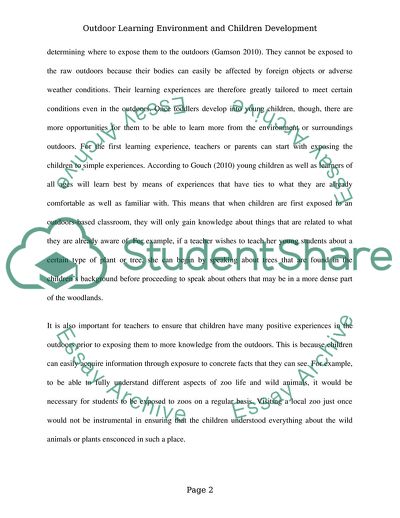Cite this document
(Strategies That Are Used in Outdoor Learning Environments in order to Literature review Example | Topics and Well Written Essays - 2750 words, n.d.)
Strategies That Are Used in Outdoor Learning Environments in order to Literature review Example | Topics and Well Written Essays - 2750 words. https://studentshare.org/education/1815257-what-strategies-are-currently-used-in-the-outdoor-learning-environment-to-support-childrens-development
Strategies That Are Used in Outdoor Learning Environments in order to Literature review Example | Topics and Well Written Essays - 2750 words. https://studentshare.org/education/1815257-what-strategies-are-currently-used-in-the-outdoor-learning-environment-to-support-childrens-development
(Strategies That Are Used in Outdoor Learning Environments in Order to Literature Review Example | Topics and Well Written Essays - 2750 Words)
Strategies That Are Used in Outdoor Learning Environments in Order to Literature Review Example | Topics and Well Written Essays - 2750 Words. https://studentshare.org/education/1815257-what-strategies-are-currently-used-in-the-outdoor-learning-environment-to-support-childrens-development.
Strategies That Are Used in Outdoor Learning Environments in Order to Literature Review Example | Topics and Well Written Essays - 2750 Words. https://studentshare.org/education/1815257-what-strategies-are-currently-used-in-the-outdoor-learning-environment-to-support-childrens-development.
“Strategies That Are Used in Outdoor Learning Environments in Order to Literature Review Example | Topics and Well Written Essays - 2750 Words”. https://studentshare.org/education/1815257-what-strategies-are-currently-used-in-the-outdoor-learning-environment-to-support-childrens-development.


